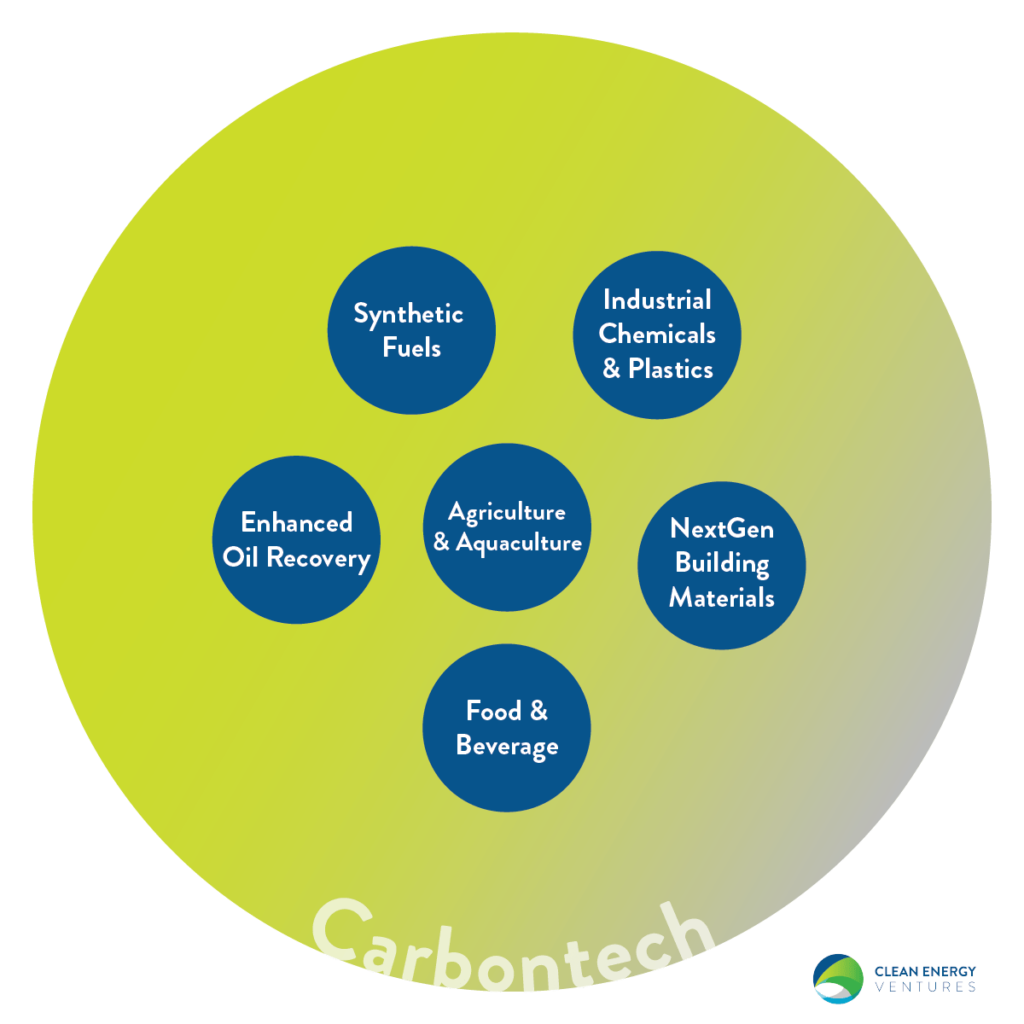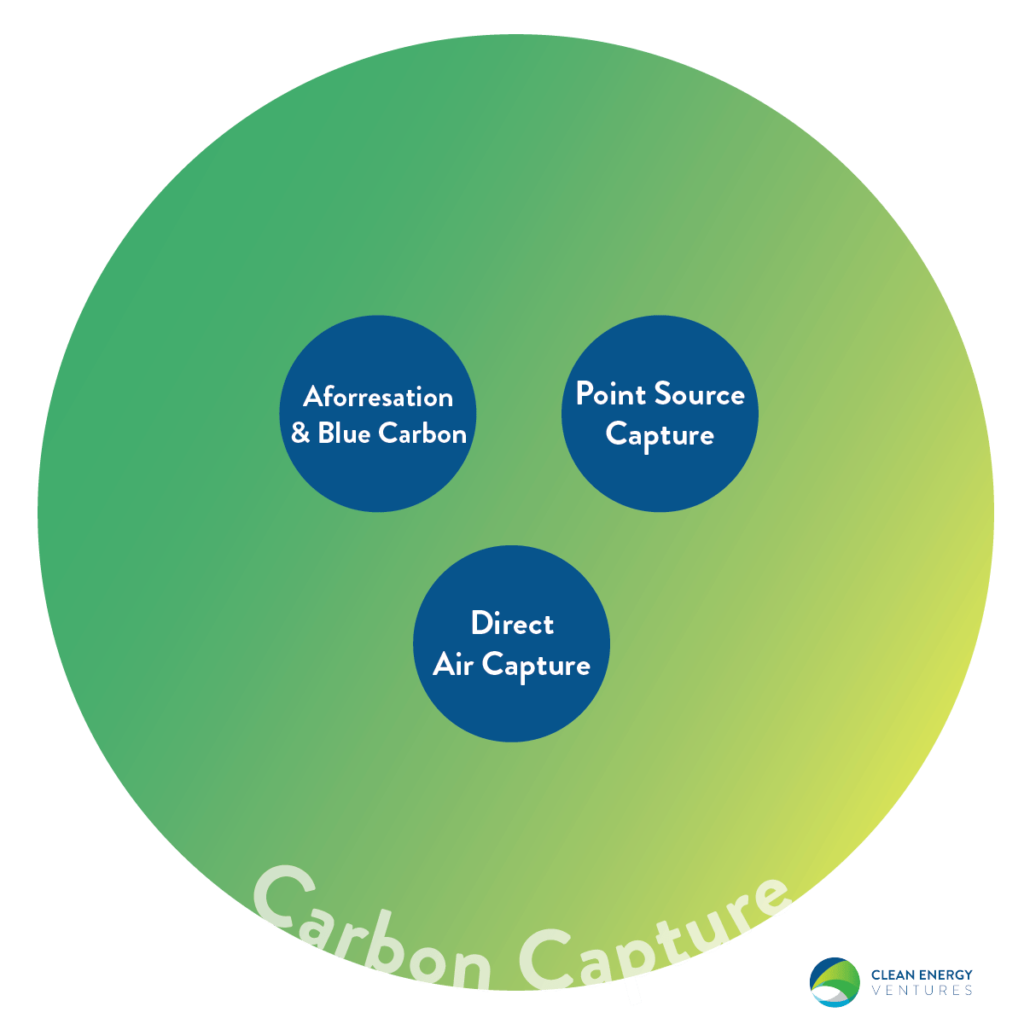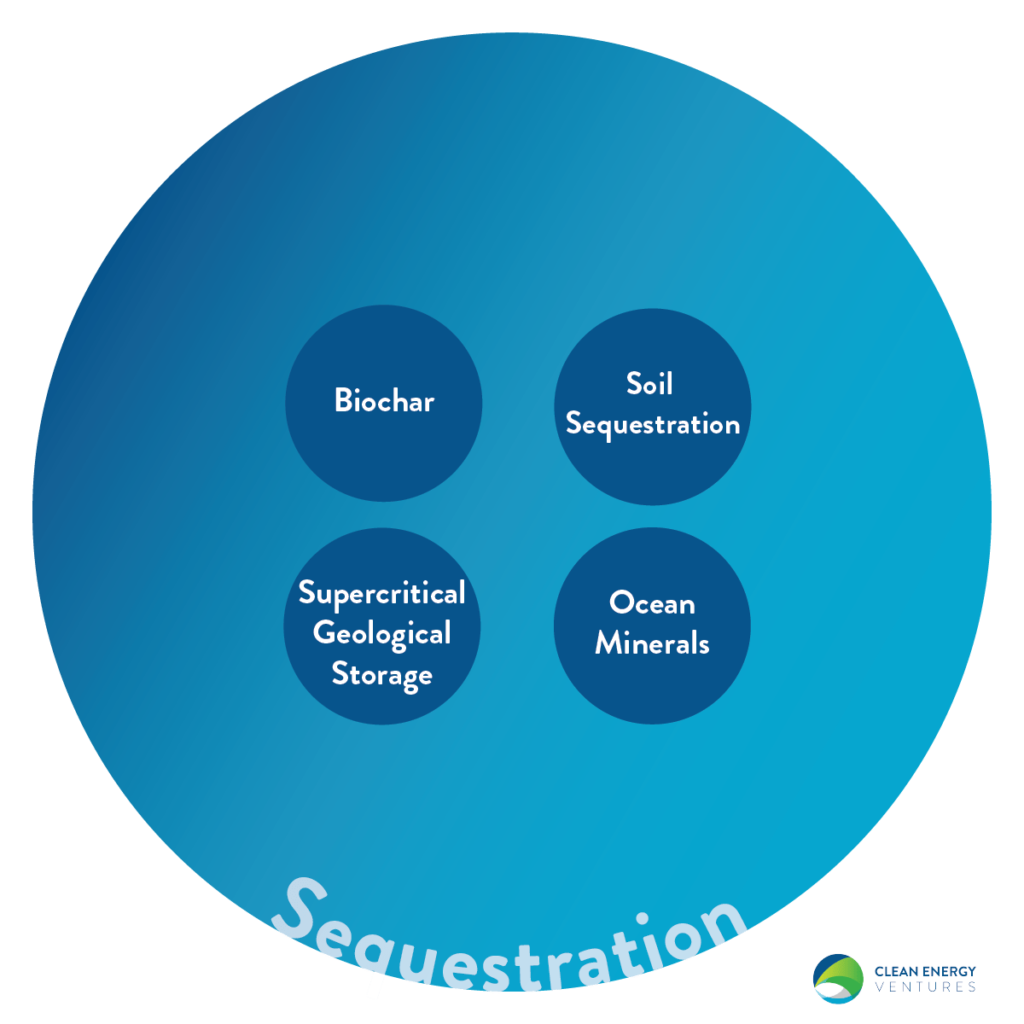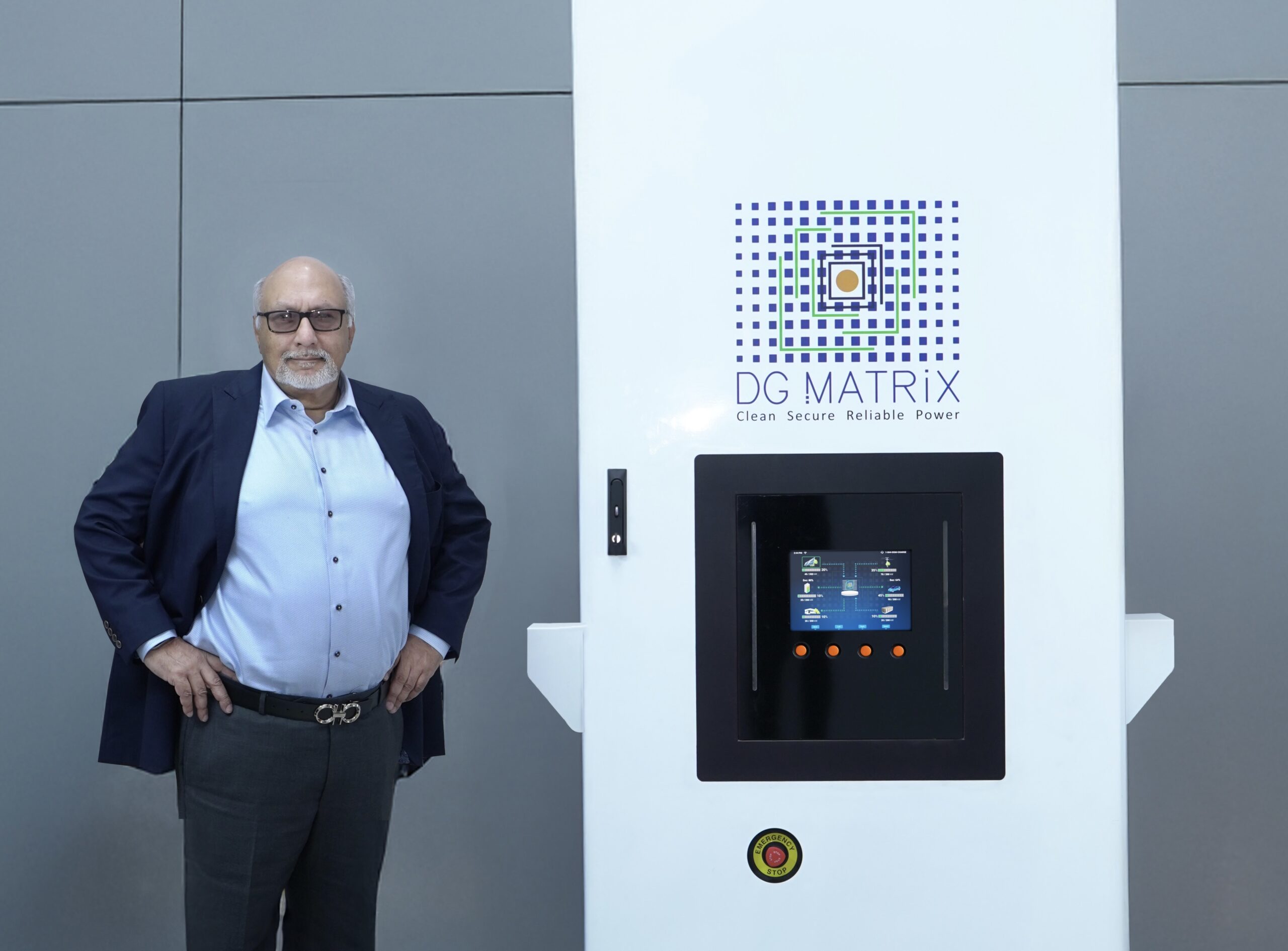Elon Musk recently announced he would give $100M to the team that can develop the best carbon capture technology. If 2020’s peak-hype for climate tech (beyond climate tech itself) was Green Hydrogen, 2021 is kicking off with a strong focus on carbon technology.
Am donating $100M towards a prize for best carbon capture technology
— Elon Musk (@elonmusk) January 21, 2021
Recently many writers and climate tech peers have been using terms like ‘carbon capture,’ ‘carbontech,’ ‘CCU,’ ‘CCUS’, and ‘carbon-to-value.’ What’s the difference between all these terms? What do we actually mean when we use them? Words matter; they help set expectations and give us a common understanding of what we’re talking about, which is particularly critical when we’re addressing new emerging technologies.

When we’re trying to solve climate change by removing carbon from the atmosphere rather than working to prevent it in the first place, there are three areas of focus (often combined): carbon capture, carbon sequestration, and carbontech.

Lets start with carbontech because it creates economic viability for carbon capture and carbon storage.
What is Carbontech?
Carbontech involves the productive use of carbon dioxide. It’s also referred to as ‘carbon-to-value’, but ‘carbontech’ (the term coined by Carbon180, according to GreenBiz) is a bit flashier and sexier. Carbontech is where the real excitement is for venture capitalists, since these technologies have the opportunity to address a global challenge and make a strong return at the same time.

Sub-sectors in carbontech include:
- Food & Beverage – Perhaps both surprising and obvious: we drink a lot of soda. Food and beverage companies pay for the CO2 used to carbonate beverages and for other food production processes today, and that CO2 doesn’t come from the air. Let’s start using captured CO2.
- Building Materials – Several companies are working on next generation concrete and new methods of steel production that substitute other compounds for carbon while creating equal or better materials. Check out CarbonCure – concrete that’s 10% stronger.
- Agriculture & Aquaculture – Anaerobic digesters are already a mature technology and productively use agricultural methane as fuel. In Asian markets there’s also new innovation around using CO2 to accelerate algae growth for feedstock for fish farms. And there are many more in this arena.
- Synthetic fuels – Perhaps surprisingly, CO2 can be used to create synthetic fuels that don’t release CO2. The costs are still higher than fossil fuels and ultra-low-carbon biofuels, but it’s an option in certain settings. Check out Lanzatech and ways to use the fuel like ClearFlame.
- Chemicals & Plastics – There’s many types and production methods for industrial chemicals and plastics like Polyethylene and Polypropylene that could replace existing feedstocks with carbon or carbon dioxide and still make good, low-cost product.
- Enhanced Oil Recovery – This is one of the most mature uses for CO2, pumping it into oil wells to capture more oil. Of course there’s the existential debate about using captured CO2 to actually encourage fossil fuel production, but today most of the CO2 used is not from carbon capture and the tech is mature. Let’s imagine this one doesn’t have a long shelf life.
What technologies are considered ‘carbon capture’?
Carbon capture is exactly what it sounds like – finding ways to capture the anthropogenic carbon dioxide driving global warming. The sub-sectors that fall into this category include:

- Afforestation – Planting more trees to use more of our ecosystem’s natural carbon capture device. Lots of folks are fans of planting trees, of course most studies now suggest the time for investing in afforestation was the early 2000’s if we want it to contribute to Paris Agreement goals Don’t believe me? Check it out in En-ROADS (please plant trees, regardless). There’s some innovation here from companies like Flash Forest and Dendra that use drones to plant trees and survey land.
- Direct Air Capture – Using giant fans to suck carbon dioxide directly from the air. This is certainly talked about a lot and a focus of companies like ClimeWorks and Carbon Engineering. To affect climate change at scale these would need to be massive and omni-present, and of course dramatically lower cost than they are now.
- Point-Source Capture – This involves grabbing carbon dioxide at the spot where it’s produced, mainly industrial smokestacks. A big benefit of this method is that the technology is already mature, and the caliber of CO2 that’s captured is comparatively high and pure (i.e. good for carbontech).
However, as my colleague Lou Schick nicely pointed out, this is the proverbial dog chasing the car. Once you catch it, what are you going to do with it? He’s right. In the climate change fight, removing it from the atmosphere is mainly the point! But, carbon capture is expensive and required at extremely large scales, so for it to be anywhere near economically effective we need safe, low-cost storage (where governments can foot the bill directly, or through policy), or productive use cases through carbontech.
What technologies fall into carbon sequestration?
Carbon sequestration (also called ‘carbon storage’) is the short or long-term hiding of carbon somewhere other than in the atmosphere. This includes sub-sectors such as:

- Soil sequestration – Here we reward farmers for certain agricultural practices that retain agricultural carbon in the soil instead of leeching it into the atmosphere (check out Indigo Ag).
- Biochar – similar to soil sequestration, this has to do with essentially making charcoal that captures CO2 and then storing it back in the ground. For the layman, think of it like making coal and re-burying it.
- Ocean Minerals – There are a few methods of storing carbon in the ocean. One involves dissolving CO2 in seawater but has some poor effects on ocean alkalinity. Others include capturing CO2 in minerals that sit at the bottom of the ocean, or storing it in ‘CO2 lakes’ at the bottom of the ocean.
- Supercritical CO2 – Another method of storage is underground. Heating and compressing CO2 and then pumping it into geological formations is an effective long-term storage method. Of course, who will pay for that?
The larger challenge with sequestration is you need to pay someone to do it. There’s no inherent value in purely storing carbon (beyond rescuing Earth). As a result, these methods will take major government support through carbon markets and pricing.
Carbontech is on the rise
Certainly there’s many places where these three arenas — carbon capture, carbon sequestration, and carbontech – overlap. And most companies who provide capture technologies are looking for productive use cases to make a market for their services. However, as we talk more and more about these emerging technologies in the coming years, using the right terms will help us all identify opportunities, isolate challenges and ask smart questions of untested and nascent technologies.
All this is to say, stay tuned for lots of discussion on the different ways to keep carbon from sitting in the atmosphere. Green Hydrogen in 2020; carbontech in 2021; at this rate I hope we’re not talking about more aggressive geo-engineering in 2022 and instead basking in the next wave of step-change solar panel innovation (Leading Edge & SunDensity) or talking about corporate carbon accounting (sounds mundane, but blockchain!).




